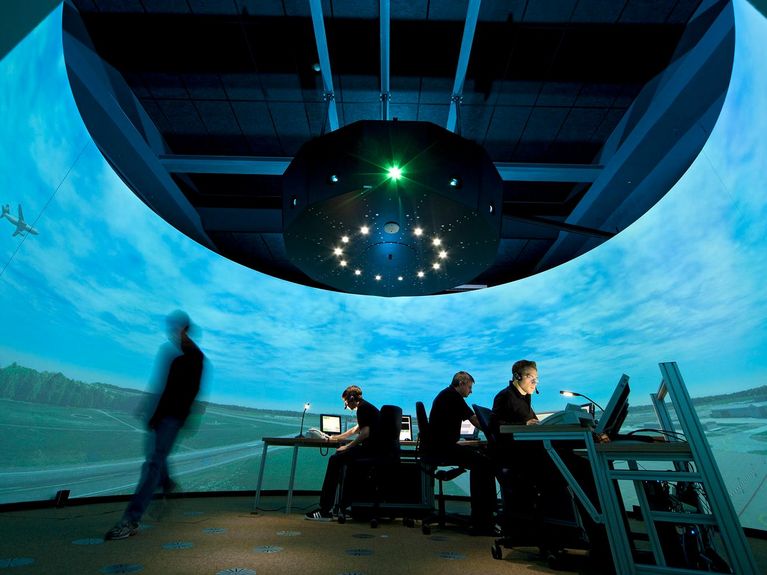
Challenge #32
Creating a Single European Sky.
In collaboration with European partners, scientists and researchers are working towards a Single European Sky, a shared airspace allowing greater capacity, safety, and environmental sustainability in air traffic.
Participating centers
As transportation systems evolve, people’s expectations for smooth, on time, and safe travel increase. From 2016 to 2019, the number of passengers guided by the air traffic management system in Europe increased from 981 million to 1.13 billion, and the number of flights increased from 8.2 to 9 million during the same time. Estimates from a 2019 project show that the annual number of flights will increase to 11.3 million by 2040.
With this long-term trend in mind, the European Commission launched the “Single European Sky” (SES) program in 1999 to ensure that national airspaces would grow together to create a more uniform and efficient pan-European airspace. All relevant stakeholders are working on this project together, including air navigation services, airports, airlines, aircraft and air navigation equipment manufacturers, and scientists alike.
As part of the EU research program “Single European Sky ATM (Air Traffic Management) Research” (SESAR), we are working on innovative approaches for a future air traffic system in Europe. These include optimized approaches for less noise and fuel consumption, more punctual and efficient operations at airports, and safe and efficient control of multiple airports from a ‘remote tower center.’
(Header: DLR/Ernsting)
SESAR 2020 Animation